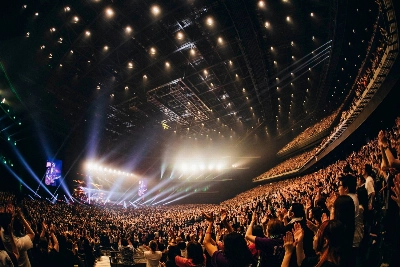Wine lovers in Tokyo are no longer far removed from the international wine scene. We have access to great wine shops and restaurants with well-chosen wines in every price category. And as we've investigated in the last few columns, bottles of wine now turn up even in formerly unthinkable locations, such as ramen shops, yakitori bars and elegant temples of washoku.
But every now and then, there's a gap -- an area where Japan still lags behind and wine aficionados here are left to wait and yearn. A stunning wine discovery that generates an excited buzz around the United States and Europe can linger unnoticed in Japan. For example, in the world's premier wine magazines like Wine Spectator and Decanter, and in top restaurants from San Francisco to Stockholm, the wines from one small nation have lately drawn large acclaim. Yet these wines remain conspicuous in their absence from Tokyo wine lists and shop shelves.
We're talking about a little gem of a country, slightly smaller than the state of Maine. Its inhabitants total 8 million -- that's less than the population of Tokyo alone. It shares borders with a complex jumble of neighbors: Slovenia, Hungary, Slovakia, the Czech Republic, Germany, Italy, Liechtenstein and Switzerland (OK, you geography buffs can now grin with victory).
The country is Austria, which claims less than 1 percent of the world's annual wine output. Since the country's overall production is tiny, Austrian winemakers have staked their competitive edge on top quality. Over the past 10-15 years, a renaissance in Austrian winemaking has occurred, with a new generation of young, passionately dedicated vintners taking the reins at their family-owned wineries. They turn out handcrafted, distinctive wines -- at prices often far below comparable bottles from Burgundy or Napa Valley.
During the red wine boom of the mid-'90s, wine fans opted for white wines that almost tasted red: concentrated Chardonnay powerhouses boasted high alcohol and lots of creamy, vanilla-tinged oak. But that frenzied era is over and wine consumers are turning away from heavily oaked, over-ripe Chardonnay. Palate fatigue sets in from wines so ostentatious that food's loveliest, subtle flavors fade in their presence.
Now a wider, intriguing spectrum of white wines is being rediscovered. For a while, the evidence was merely anecdotal: Sommeliers reported that diners were asking about alternatives to Chardonnay. Increasingly, grape market statistics confirm the shift. In California, where in the past decade Chardonnay was vastly overplanted in mediocre Central Valley sites, Chard grapes now sometimes are left in the vineyards to rot. In the last year alone, the amount of Chardonnay picked in the U.S. dropped 13 percent. Despite brave faces in the wine industry, it's no secret that the bottom has fallen out of California's Chardonnay market, and grape prices have plummeted.
At precisely this moment, Austria holds a trump card. Its greatest strength is magnificent, unoaked, crisp white wines. Austrian whites (most notably made from the Gruner Veltliner and Riesling grapes) offer an intricate filigree of flavor and aroma. At their finest, they reveal savory mineral flavors, white pepper, the racy spice of acidity and mouthwatering, succulent fruit -- so bright and pure that it sings from the glass. We're hushed; we pause to listen to the music of the wine.
In Austria recently, we tasted Gruner Veltliner and Riesling wines from Vinea Wachau, a legally protected, historic wine-growing area where rocky, terraced vineyards rise steep above the Danube River. These wines flirt with the tongue; their lush honey, pear, melon and tangerine flavors are shot through with a vibrant tingle of steely acidity. At the wonderful, family-owned Loibenerhof Restaurant (tel: +43 02732-82890), we sampled meat dishes traditionally paired with these dry, almost briny white wines -- crispy roast pork; rich, dark and earthy blood sausage; homemade noodles studded with smoky nuggets of bacon. If you have ever believed the old adage that red meat dictates red wine, then such a meal is a lusty, joyful revelation.
When we sip wine, we're transported to the spot from which it came. We taste the earth's minerals and the infusion of sun in grapes that clung to a precipitous vineyard slope. Our curiosity about the place is stirred. Perhaps we then make pilgrimages to taste wines at the vineyard edge; we venture into the cellar with the vintner. We sample local food that evolved with the wines. In the process, we detect the story in the bottle; and its discovery makes the wine infinitely richer. Our next Vineland column will feature hot travel tips through Austria's wine regions.
In Tokyo, the selection of Austrian wines still remains limited. But two longtime Austrian residents of Japan, Wolfgang Forster and Norbert Tesch, run wine-importing companies that provide Austrian wines by mail-order. They offer savvy wine advice and will ship directly to their customers' doorsteps anywhere in Japan. Both can assist in English, Japanese and German.
Wolfgang Forster Alcotrade Trust Inc., 1-14-13, Ue-machi Chuo-ku, Osaka, tel. (06) 6765-7592; e-mail: [email protected]; Web site: www.alcotrade.com
Norbert Tesch Austria World Association, 2-14-101 Takatsuka-cho, Nishinomiya, Hyogo; tel: (0798) 72-7022 e-mail: [email protected]; Web site: www.awa-inc.com
















With your current subscription plan you can comment on stories. However, before writing your first comment, please create a display name in the Profile section of your subscriber account page.